|
Update: Where does Onshape fit?
THE WORST TO BEST 3D CAD SYSTEMS AND WHY!! So how am I judging this?? First, all of these system can do the job. We are only considering their ease of use, cost, ROI and interoperability with other systems. How they handle imported data and how they communicate with manufacturing and other groups that depend on that data. This is CAD only, not CAE. No consideration is given to analysis or simulation capabilities.  PLM & PDM DEFINED PLM & PDM DEFINEDThe top worst 3 programs are the PLM based programs. PLM and its supporting functionality such as MBE is basically an unworkable solution. I seem to be the only one beating this drum. I am a drafter and for years my job has been in making sure that manufacturing got precise and concise information in a standard drawing. With CAD the drawing was even made easier and more precise with ability to create the views directly from the solid Model. I have coined these not drawings but AID (Associated Information Document) which gives a better description of the purpose. There are many in the PLM industry that hate the word "Drawing". The Death of the Drawing THE DATA MANAGEMENT MESS Topic: E(E): One Revision to Rule Them All You can see from the article that there is a huge confusion in the PLM/PDM community. I was made aware of this from the complaints I was getting from my Boeing suppliers. They just ended up working around the PLM and MBE requirements. Here is a comment from the PLM PDM CAD Network on Linkedin. Kais Al-Timimi Managing Director at Datamation Limited  I don’t think a PhD is needed to understand this. Simply to see it from the perspective of the total business, and not just from the design perspective. Furthermore, I don’t think any of the contributors to this discussion disputes the fact that the drawing has been, and continues to be, a convenient way of communicating design intent. But as several contributors have said, what it communicates represents only a fraction of the overall product data. As I said before, and Paul recently, we should see the drawing as a representation, or a snapshot of the design part of product data. As such it represents only one way of communicating design intent." So unless you are interested in looking to your CAD system to run your company on an unworkable non-standard engineering system take a look at these products. You will be wasting your time and money by redefining a proven and workable standard engineering system. There are better ways to maintain your engineering documentation than to hand it over to the CAD system, thereby turning your engineers, designers and drafter into data managers. Compare and Validation Programs? Band-Aids for Self Inflicted Wounds! So today we don't have to have the high end PLM system. We just need systems that can create and read a standard deliverable. We should have an open sourced standard document control system. Universal CAD Compatibility is Here!  The Pro/E Paradigm – 25 Years of Incompatibility The engineering world has finally woken up and are now providing direct edit functionality. Here are some of my articles promoting direct editing and its advantages. NEXT GENERATION CAD TECHNOLOGY APPLIED!
The most limiting function of the Pro/e paradigm is the separate part, assembly and drawing files. This feature alone had caused havoc in the industry leading to some very strange PLM and MBE solutions. Each of these high end PLM based programs have their unique PLM and PDM which is fine as long as you stay inside the program. But when they try to use the native files in the form of PMI their PLM system completely falls apart for those outside this system that need this information, such as purchasing, marketing, tech pubs, manufacturing, etc. Now many of you are experts in these system and have no real knowledge of any other system. The high end systems are very difficult to get experience since they are only being used by companies that can afford the enormous overhead required by these products. The companies demand that the designer be experienced in their system, there by making the pool for prospective engineering personnel limited in size. The goal of the industry should be creating a open system equal to what we had with board drawings, where industry experience is considered first. UDE (Unified Design Environment)
As a standard is established the need for so many different CAD systems will soon disappear. The cost will come down and we will end up with one common standard hybrid system on the order of Microsoft Office. The standard CAD system will be available at a reasonable price to anyone interested. Document control will be an open system outside the CAD system. Released engineering will be in the form of a Standard deliverable that will be available to engineering and other pertinent departments. The complexity of the past will yield to the simplicity of the future. The CAD Systems! The next three programs should not even be considered unless you are a company with multi-year projects, with many concurrent users and outside suppliers and can afford the huge overhead required to implement and maintain the system or if you have an "in concrete" long term contract with a company that uses them. The basic cost of the system is miniscule compared the required IT supporting staff to maintain them. They are designed in such a way as to create a heavy dependence on the system demanding more and more support from the CAD vendor. #1 Worst CAD
system. Dassault Catia 5 There is only one reason why this product is so popular? The Boeing Airplane Company Why did Boeing settle on Catia?? It was the only CAD
system that ran on an IBM work station at the time. They had experimented with Computervision which ran on a somewhat undependable mainframe computer that
required a refrigerated room. Each station cost around $250,000 with a
minimum order of 3 seats, yes $750,000. They tried a couple of other systems
that did not need this computer power, but had their own unique hardware.
In those days no manager got fired for buying IBM. This was a very
logical decision. I have a bit of history with Catia. In 1985 I took a
contract with Boeing Commercial in Everett and was assigned to 747 Flight Deck.
I took the job to get back home. It was a board job even though I had 4
years of 3D CAD design experience on CV. Boeing did have a few seats of CV CADDS 3. The group had 5 seats of Catia 3. This was a 3D
wireframe system with surfaces. The operators were prima donna drafters. I was informed there was a PC based CAD system on a
couple of Compaq’s. It was 3D CADKEY, since I already had 3D wireframe
experience on CV and CADKEY was very similar I was up and running in 2 weeks
of lunch hours. I soon proved that it was a serious CAD system by doing a
somewhat large project, the First Observers Workstation. Soon we had 45
seats of CADKEY and eliminated one seat of Catia. Why isn’t CADKEY Boeing’s Major CAD system? BCS (Boeing Computer Service). These folks were like the Gestapo. They could not control the new PC’s (Personal Computers) that were showing up everywhere. They actually had a vendetta against CADKEY. The grass root movement failed against this powerful organization. Back to Catia 5. Yes, Catia 5, Catia 6 has been out
for over 6 years and Boeing, Airbus and many other companies have not moved to
it. The reason?? Many of you may not know about the Catia 4 to 5 fiasco. Catia
5 can not directly read or even utilize Catia 4 files. Every plane prior to
the 787 was being completely or partially designed in Catia 4. This was, and still is, a complete
horror show for Boeing and AirBus. Not only was Catia 5 not compatible with Catia 4 it was
basically not compatible with the rest of the industry. Catia 4 was a direct
editing Boolean program but Catia 5 was and still is history only. Luckily
for Boeing, many CAD systems could read Catia native files. But if you
received a Boeing file and you needed to modify it, Boeing could not
incorporate the changes without modifying the original part or recreating
the part altogether.
Catia 5 was basically a Pro/e Clone. Pro/e hit the
market so hard that all future CAD systems had to have history based
parametric solid modeling. But instead of just buying Pro/e, I am sure,
Boeing working with Dassault and came up with Catia 5 (with the help of
Solidworks??). In an industry where
change is the only constant, having a history based only system puts them in
a place where they were at the mercy of the biggest CAD limitation: The
Pro/e history only based paradigm. Add to that the high turnover of engineering personnel. Many
of you have suffered with changing a complex history/feature based part.
This paradigm depends heavily on the experience of the user. If you are
inexperienced or not too bright you can create havoc in the building of a
part.
Conclusion: Stay away from Catia, the push from
Dassault with this product today is not CAD, but a poorly designed PLM
system to run your engineering documentation and company. With prices starting at around
$9,000.00 for the basic system and a variety of optional modules that can
drive the price sky high without much ROI. If you are stuck with Catia 5 there is a "huge" easy
solution. You don’t even have to worry about legacy data. Products like
IronCAD and ZW3D can not only read Catia 4, 5 and 6 native files, but can
write Catia 4 and 5 native files. It is by far the easiest replaceable CAD
system today, which is a bit weird since it is the least interoperable
system. Negatives
Today Creo seems to be a fragmented product.
PTC is responsible for putting CAD on a path of
standardizing of the most complex convoluted process for solid modeling ever
devised. We are starting to finally overcome this tragedy that has cost the
industry billions of dollars in incompatibility. Today all of the major CAD
programs are based on this dated paradigm putting the industry in a
incompatibility head lock.
None of the CAD package based on this paradigm are compatible. Today, it is
more important now to have CAD specific experience than industry related
experience.
NEXT GENERATION CAD
TECHNOLOGY APPLIED!
I really don’t have to
get into the operation of Pro/e and its limitations. Many of you experience
it every day. In the beginning this was the only CAD system that was
designed for solid modeling from the ground up. There was nothing to compare
it. It was priced less than that 3D wireframe/surfacing packages like CV and Catia and offered much more productivity by delivering the solid model even
though its complex operation had a very long, steep learning curve. The
parametric functionality promised much more than it delivered. It could
handle large assemblies and provide a technology hungry industry a viable
solid modeling solution. Companies would bring on the program and get everyone
trained, sometimes taking 3 months to get familiar and up to a year to get
proficient. Soon the companies that came on board later started to recruit
the experienced Pro/e users with attractive rates. Soon many companies
realized that they were becoming nothing more than Pro/e training centers.
This, of course, led to experience in the CAD system an employment
requirement priority. But back to CAD. Pro/e has moved to Creo. There are
two basic programs, Creo Parametric (Pro/e) and Creo Direct (CoCreate). Both
are standalone systems. Creo Direct is an added cost to Creo Parametric. The
base package is around $7000.00 if I remember right. I don't know the price
of Creo Direct, but I am sure the cost of both packages is much more than NX
which includes both functionalities. But the other optional modules can,
like Catia, drive the price sky high. It is also focused on providing a PLM
solutions. These products are touted for large multiyear projects, with many
concurrent users. Conclusion: This is another product I would not
recommend. It
really does not offer the ease of use that are delivered with any of the
systems below. And I feel they have not fully integrated the direct editing,
mostly creating a fragmented CAD solution. Negatives Pro/e history/feature based only design.
#3
Siemens NX
It, like the other PLM products, are delivering a
non-standard CAD specific solution for handling the engineering data
throughout the company. I am completely against these non-standard PLM
solutions. We need a standard open system that these CAD companies MUST comply. This
separate unique data management solutions are stifling the industry. Conclusion: NX offers an
attractive design solution. The price is probably out of the range of most
companies/individuals and really doesn't offer any more productivity then
many of the less expensive solutions below. So, would save my money and pass
on this one. Negatives Not a single model environment #4
Siemens Solid
Edge We were a reseller for Solid Edge years ago when they
were introducing Synchronous Technology, Siemens direct editing solution. I
have been told that direct editing is an external module with Solid Edge. But even then,
Solid Edge is no better than and not as popular as SW and Inventor and
offers about the same productivity. Conclusion: I would not recommend it over SW or Inventor.
Negatives Not a single model environment #5
Dassault Solidworks
There is really no reason to describe this product it
really is just a Pro/e clone. But it is not just the price that makes it
better than Pro/e. It has integrated direct edit functionality. Most of the
users do not incorporate this into their design process but it is available,
making it a much better solution than the above systems. It is priced much
less than the above and offer equal if not superior performance.
Conclusion: Even though it is bit better that the
above products, except for NX, it is still limited by the dated Pro/e
paradigm of separate part, assembly and drawing files. This functionality is
touted by its new supposedly companion product, SW Mechanical Conceptual as
being a limiting function. They have introduced the Single Model
Environment. They are right, this is the most productive function in CAD
today. This is why I cannot recommend SW. It just does not offer the
interoperability that is available in other products.
Negatives: Not a single model environment #6
Autodesk Inventor
I did a design modifying the non-native part and even
doing the drawing. I would change the part in the Fusion module and it would
change in the drawing. They have now integrated the direct editing function
in Inventor making it even more attractive. But each direct edit function is
still part of the history. This is a problem since at this time you cannot
incorporate the prior history when you do a direct edit function. Until they
make the direct edit functionality more of the design process, I feel the
basic Pro/e paradigm programs are not taking advantage of the two paradigms.
It seems that they are incorporating direct editing to modify non-native
parts, not to incorporate into their design process. Sadly they are not
providing the industry with a new CAD solution with smooth integration of
history/feature and direct edit functionality. But delivering limited Direct
Modeling solution that do not have the parametric options. We truly need
both. Conclusion: While Inventor is miles above SW with a
much more intuitive UI, it still is limited by the Pro/e Paradigm of
separate part, assembly and drawing files. Negatives Not a single model environment The above packages are basically Pro/e clones and are virtually worthless for suppliers that work with many different CAD programs. #7 CAD in the Cloud. Onshape
Please read the part on setting up a standard deliverable on a webpage!! Onshape completely serves the purpose.
#8 May be the Ultimate CAD System. ZW3D - An Incredible Value!
ZW3D Advantage over every other system is the Value!
It has both history and integrated direct editing. It, like IronCAD, can combine all of its history into one easy to modify Brep. It also has a Boolean shapes available. What sets it apart from many systems it that it is the only history based CAD system that can have the part, assembly and drawings in one file. You can design like the Pro/e paradigm and have standalone parts, and it has integrated drawings. Very, very nice. Just imagine how, by having the drawing and part/assembly integrated into one file would simplify PLM or PDM? ZW3D has two levels of design products, a Lite
version and a Standard version that adds Free Form Class A Surfacing, Sheet Metal and
Reverse Engineering. You can add the functionality when needed. It is one of
the few truly integrated CAD/CAM solutions plus robust Mold design
capabilities. You can design and take it
through to manufacturing in one associated product. ZW3D claim to fame is with its pricing starting at
$1,295.00 it is providing CAD as a commodity
allowing virtually anyone to afford to have a professional CAD system. You
can get 4 seats of ZW3D Lite or 4 ZW3D Standard for the price of one SW or
Inventor. All ZW3D programs include the capability to read Creo (Pro/e), Siemens NX/Solid Edge, Solidworks and Autodesk Inventor native files. Read and write Catia 4/5 native files and all of the standard formats. Conclusion: If you are a Hobbyist, Designer, Engineer
or Inventor thinking about creating your own next great design or to doing
consulting work and you don’t have the funds available for the other
over priced CAD
solutions, look to ZW3D. If you are a company with multiple seat
requirements and are
tired of paying thousands of dollars for annual maintenance for an overly
complex system, look to ZW3D. It offers a very cost effective professional CAD
solution and can be easily implemented into your existing engineering
process. Negatives
IronCAD  Now for what I consider
the best CAD system. IronCAD offers so much more functionality than any of
the popular CAD systems. The best functionality above all of the others is
the UDE (Unified Design Environment) or what SW
Mechanical Conceptual calls the Single Model Environment. This
allows you to have many iterations of the same design. Copying and pasting
different parts or complete assemblies. They can be copied or linked. You can import large assemblies
into SW and it would populate your hard drive with separate parts,
assemblies and subassemblies it comes into IronCAD in one easy to handle
single design space file with the parts, assemblies and subassemblies
defined. Now for what I consider
the best CAD system. IronCAD offers so much more functionality than any of
the popular CAD systems. The best functionality above all of the others is
the UDE (Unified Design Environment) or what SW
Mechanical Conceptual calls the Single Model Environment. This
allows you to have many iterations of the same design. Copying and pasting
different parts or complete assemblies. They can be copied or linked. You can import large assemblies
into SW and it would populate your hard drive with separate parts,
assemblies and subassemblies it comes into IronCAD in one easy to handle
single design space file with the parts, assemblies and subassemblies
defined.
UDE (Unified Design
Environment) It also has robust parametric history based design
including both constrained and Innovative part design. Innovative part
design allows you do design without defining constraints. Also included
is integrated direct editing at the touch of the right mouse button. But it
handles the direct editing much different than the prior products. When a
direct edit function affects the basic history, it will consume the history
into the solid model thereby giving you a hybrid part with a mixture of
history and a Brep. Never to worry, you have all of the robust direct edit
functionality to easily continue your design. You even have the ability to
turn the model into a single Brep.
The Lost CAD Paradigm or
How I Found Freedom in an UNFREE CAD WORLD! But thos e are not the only unique features. You design by dragging and dropping standard shapes, positive and negative plus custom shapes, parts and assemblies from an easy accessible standard or custom catalog. Now don’t confuse this with simplistic Boolean shapes, these are complex shapes based on sketches that can be edit. Yes you can have Brep solids also.
All direct editing packages have a face or feature
manipulator that allows you to modify face, shapes or part by moving or
copying. But all have basically copied the triball. This offers the
manipulation of virtually all of the features, parts and assemblies miles
above the imitators.
While many of the other CAD system have one or two
of these features, none have them all. None have the incredibly well
designed drag and drop functionality totally unique to IronCAD. Below is a
more complete review of the above unique functionality. Showing differences in Import - Using Dual Kernel and Repair options.
Conclusion: Before you fall victim to one of the Pro/e clones and the dated and complex paradigm. Take a look at the easy to use IronCAD. IronCAD's INOVATE offers a very inexpensive modeling only solution that provides incredible flexibility to your design process, much better than SWMC. Negatives: You have to start somewhere with a standard. IronCAD establishes that standard.
In
All of my sales calls were for Autocad. So against my Autodesk VAR managers wishes I took a bit of time to learn Autocad Mechanical 2012. I found it very similar to my first experience with the 2D interface. But, they now included surfacing and push/pull solid modeling. I found the surfacing easy, fun and adequate for light design. The push/pull solids were also fully functional. I can't remember if you could modify non-native solids. I had some fun playing, but did not do any serious work. I could not get past the idiosyncratic 2D interface. I got an email from a fellow who made me aware I had left Autocad out of this comparison. He is happily doing 3D design in Autocad and seems to be very proud of his 3D work. I am not sure of all the benefits of Autocad. As I look over the brochures and website I really don't see any reference to the surfacing, solid modeling or the access to Fusion which was included in the package. Can I recommend this package? I really can't, it really is sort of a kludge that I think Autodesk is basically stuck with. But if you are an Autocad user, I would definitely investigate these capabilities before moving to another package. It truly is not your fathers, uh, grandfathers Autocad.
UPDATE: I was told by a SW VAR that this package does include history capabilities. I have looked over the promotional materials and it has only states direct edit and they do not have evaluation available for download. This is an important feature and should not be overlooked
|




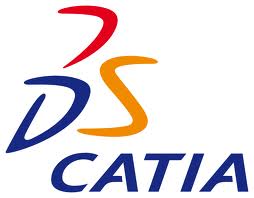
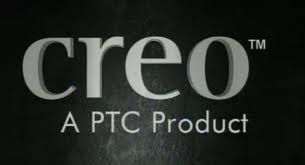
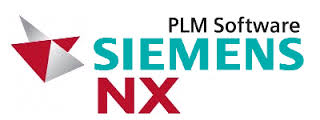
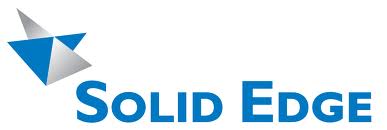
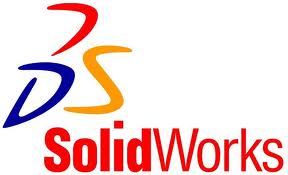
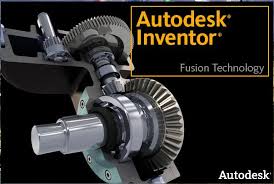
 Why
w
Why
w

 This is the old CoCreate that was purchased by PTC. It is a dated program. I
have used it and found it to be a bit clunky and non-intuitive. My focus
with this program was direct editing with non-native parts. I would get strange errors when
importing parts into CoCreate, and not sure what it indicated. But it
is a fully functional CAD package. I am not sure how smoothly it integrates
with Creo Parametrics
This is the old CoCreate that was purchased by PTC. It is a dated program. I
have used it and found it to be a bit clunky and non-intuitive. My focus
with this program was direct editing with non-native parts. I would get strange errors when
importing parts into CoCreate, and not sure what it indicated. But it
is a fully functional CAD package. I am not sure how smoothly it integrates
with Creo Parametrics Autodesk
Autocad
Autodesk
Autocad Siemens ST
Siemens ST